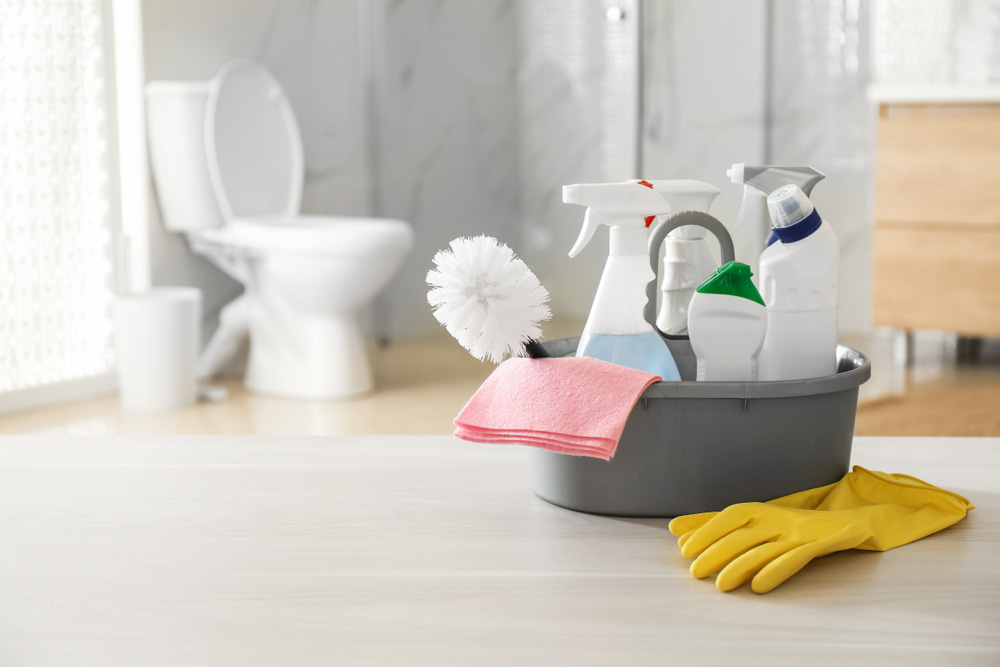How to Maintain and Clean Your Bathroom Tile for Longevity
Tiles are a key feature of any bathroom, adding to its aesthetics while also ensuring durability and water resistance. However, without proper maintenance, bathroom tiles can accumulate dirt, soap scum, and even mold, which can affect both their appearance and lifespan. Keeping tiles in top condition requires a consistent cleaning routine and a few strategic practices to prevent long-term damage.
Understanding the Importance of Regular Maintenance
 Bathroom tiles are constantly exposed to moisture, soap residue, and dirt, making them vulnerable to staining and deterioration over time. Regular maintenance helps prevent buildup that can be difficult to remove if left untreated. By implementing a cleaning schedule, homeowners can keep their bathroom tile looking fresh while also preserving their structural integrity. Ignoring tile maintenance can lead to discoloration, unpleasant odors, and even damage to the grout, which can allow water to seep beneath the surface and cause hidden issues such as mold growth.
Bathroom tiles are constantly exposed to moisture, soap residue, and dirt, making them vulnerable to staining and deterioration over time. Regular maintenance helps prevent buildup that can be difficult to remove if left untreated. By implementing a cleaning schedule, homeowners can keep their bathroom tile looking fresh while also preserving their structural integrity. Ignoring tile maintenance can lead to discoloration, unpleasant odors, and even damage to the grout, which can allow water to seep beneath the surface and cause hidden issues such as mold growth.
Choosing the Right Cleaning Products
The choice of cleaning products plays a significant role in maintaining bathroom tiles. Harsh chemicals can cause damage over time, especially on natural stone tiles, while using the wrong cleaner may not effectively remove grime. A mild detergent mixed with warm water is often sufficient for routine cleaning. Vinegar and baking soda are also natural alternatives that can help break down stains without causing harm to the surface.
For those with ceramic or porcelain tiles, a non-abrasive cleaner is best to maintain their finish. Natural stone tiles require pH-neutral cleaners to avoid erosion or dulling of the surface. Avoiding bleach on grout is also essential, as excessive use can weaken its structure, leading to cracks that allow moisture to penetrate.
Effective Cleaning Techniques for Different Tile Types
Different tile materials require tailored cleaning methods to ensure they remain in good condition. Ceramic and porcelain tiles are relatively easy to clean with warm water and a mild detergent. A soft cloth or mop can be used to wipe away residue, while a microfiber cloth helps dry the surface without leaving streaks.
Natural stone tiles require special care due to their porous nature. Acidic cleaners, including vinegar, should be avoided as they can etch the surface. Instead, using a dedicated stone cleaner or a diluted mild soap solution can help maintain the tile’s natural beauty. Sealing natural stone tiles periodically is also necessary to prevent moisture absorption and staining.
Preventing Mold and Mildew Growth
Moisture creates an ideal environment for mold and mildew to thrive in bathrooms. Proper ventilation is key to preventing this issue. Keeping windows open or using an exhaust fan helps reduce humidity levels, limiting mold formation. Wiping down tiles after each shower minimizes water accumulation and prevents mildew from taking hold.
Grout lines are particularly vulnerable to mold growth due to their porous nature. Sealing grout every six months can provide a protective barrier, making it easier to clean and preventing moisture absorption. If mold does appear, a mixture of hydrogen peroxide and water can be an effective solution to remove it without damaging the grout or tile.
Dealing with Stubborn Stains and Soap Scum
Soap scum and mineral deposits can build up over time, creating a dull and unattractive appearance on bathroom tiles. Hard water stains, in particular, can be difficult to remove without the right approach. A mixture of white vinegar and water can help dissolve mineral deposits when applied with a soft cloth. For tougher stains, a paste made from baking soda and water can be gently scrubbed onto the surface before rinsing thoroughly.
Using a squeegee after every shower can reduce soap scum buildup, preventing the need for deep cleaning sessions. Regularly wiping tiles with a damp cloth also helps prevent residue from settling in the first place.

Maintaining Grout for a Clean and Polished Look
Grout plays a crucial role in keeping tiles secure, but it is also one of the most challenging areas to maintain. Dirty or discolored grout can make even the cleanest tiles look unkempt. Using a soft brush and a mixture of baking soda and water can help lift stains from grout lines without causing damage.
For heavily stained grout, applying a hydrogen peroxide solution can brighten the surface without the need for harsh chemicals. After cleaning, sealing the grout helps maintain its appearance and prevents future staining. Choosing a darker grout color when remodeling can also make maintenance easier, as it is less likely to show dirt compared to lighter shades.

 Each tile material has unique characteristics, which means the cleaning approach should be tailored accordingly. Ceramic and porcelain tiles are among the most common and are relatively easy to maintain with regular sweeping and mopping. Natural stone tiles, such as marble, travertine, and slate, require extra care due to their porous nature. Using harsh chemicals or acidic cleaners on these surfaces can cause discoloration or damage. Identifying your tile type is the first step in selecting the best cleaning method.
Each tile material has unique characteristics, which means the cleaning approach should be tailored accordingly. Ceramic and porcelain tiles are among the most common and are relatively easy to maintain with regular sweeping and mopping. Natural stone tiles, such as marble, travertine, and slate, require extra care due to their porous nature. Using harsh chemicals or acidic cleaners on these surfaces can cause discoloration or damage. Identifying your tile type is the first step in selecting the best cleaning method. Outdoor tiles face additional challenges due to exposure to weather conditions, dirt, and debris. Regular sweeping and hosing down with water keep them clean, while a mild detergent removes stubborn dirt. Moss and algae growth can be prevented by ensuring proper drainage and allowing sunlight to reach tiled surfaces. If needed, a pressure washer can help clean large outdoor areas effectively, but using it at a low setting is crucial to avoid damaging the grout.
Outdoor tiles face additional challenges due to exposure to weather conditions, dirt, and debris. Regular sweeping and hosing down with water keep them clean, while a mild detergent removes stubborn dirt. Moss and algae growth can be prevented by ensuring proper drainage and allowing sunlight to reach tiled surfaces. If needed, a pressure washer can help clean large outdoor areas effectively, but using it at a low setting is crucial to avoid damaging the grout. Carpet fibers trap dirt, dust mites, pet dander, and bacteria that can accumulate over time. This build-up can affect indoor air quality and even contribute to allergies and respiratory issues. Regular cleaning helps to remove these pollutants, ensuring a healthier environment for your home or workplace. Additionally, carpets endure heavy foot traffic, leading to wear and tear. Without proper maintenance, fibers can break down, making carpets look old and worn prematurely. A routine cleaning schedule extends the life of your carpets, keeping them looking new and fresh for longer.
Carpet fibers trap dirt, dust mites, pet dander, and bacteria that can accumulate over time. This build-up can affect indoor air quality and even contribute to allergies and respiratory issues. Regular cleaning helps to remove these pollutants, ensuring a healthier environment for your home or workplace. Additionally, carpets endure heavy foot traffic, leading to wear and tear. Without proper maintenance, fibers can break down, making carpets look old and worn prematurely. A routine cleaning schedule extends the life of your carpets, keeping them looking new and fresh for longer.